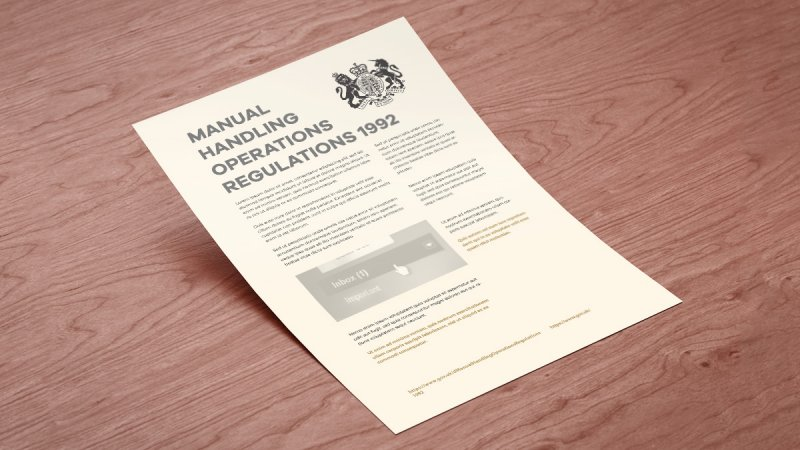Our Manual Handling Courses
The Manual Handling Operations Regulations (MHOR) of 1992 were created as rules for businesses to follow when it comes to the risks that can be involved when manual handling occurs, this is so there is a straight forward, standardised way of managing risks in the workplace. Wherever there are risks, the regulations apply.
Firstly, they define manual handling as “any transporting of a load by hand or bodily force”. In other words, if you are ever moving or holding something without the use of a machine, then you are carrying out manual handling. They class the “load” as an object, person or animal.
The Contents of MHOR
The MHOR sets out a ranking system that measures the risks from manual handling for employers to follow. These measures are:
• First: Avoid hazardous manual handling operations as much as is reasonably practicable
• Second: Assess any hazardous manual handling operations that cannot be avoided
• Third: Reduce the risk of injury as much as is reasonably practicable
Structured into four sections, the MHOR starts off with a brief guidance on the regulations, and then follows with a detailed coverage on how to carry out risk assessments and control risk. Additionally, the appendix includes a risk filter to help readers identify the tasks to do without needing to trawl through a lengthy assessment.
The 1992 regulations reflect the changes introduced by the Health and Safety at Work Act of 1974, covering the general duties of self-employed persons, and what their responsibilities are.
Who do they Impact?
These guidelines are aimed at employers, managers and safety representatives. Whoever is in a position of responsibility of the employees can be held accountable for injuries caused from manual handling. The regulations are there to help them avoid, assess and reduce the risk of injury from manual handling, therefore they need to make sure they are following them closely to ensure they keep a healthy and happy team.
The employees have duties too though, everyone has a part to play if accidents happen. They should:
• Follow systems of work in place for their safety
• Use equipment properly that is provided for their safety
• Cooperate with their employer on health and safety matters
• Inform their employer if they identify hazardous handling activities
• Take care to make sure their activities don’t put others at risk

Why are they Needed?
Incorrect manual handling is one of the most common causes of injuries at work. It causes damage to the individual’s back, or work-related musculoskeletal disorders (MSDs), if carried out incorrectly – such as picking up something heavy without bending your knees to reach it. The result in mistakes like these has resulted in manual handling equating to over a third of all workplace injuries.
Manual handling injuries can happen anywhere people are at work – on farms and building sites, in factories, offices, warehouses, hospitals, banks, laboratories, and out-and-about whilst making deliveries. Heavy manual labour, awkward postures, manual materials handling, and previous or existing injuries are all risk factors in developing MSDs. There is more information and advice on MSDs on the HSE website, including advice on managing back pain at work.
Manual handling management could not be more important in the workplace, which is why these regulations need to be a top priority. Remember the three steps – avoid, assess, reduce.


